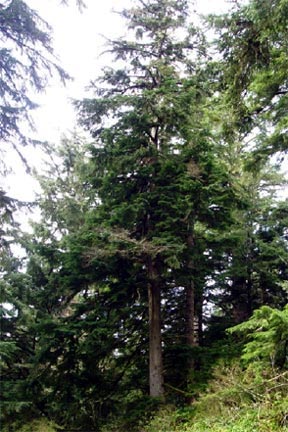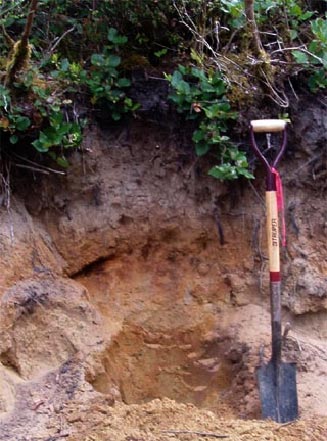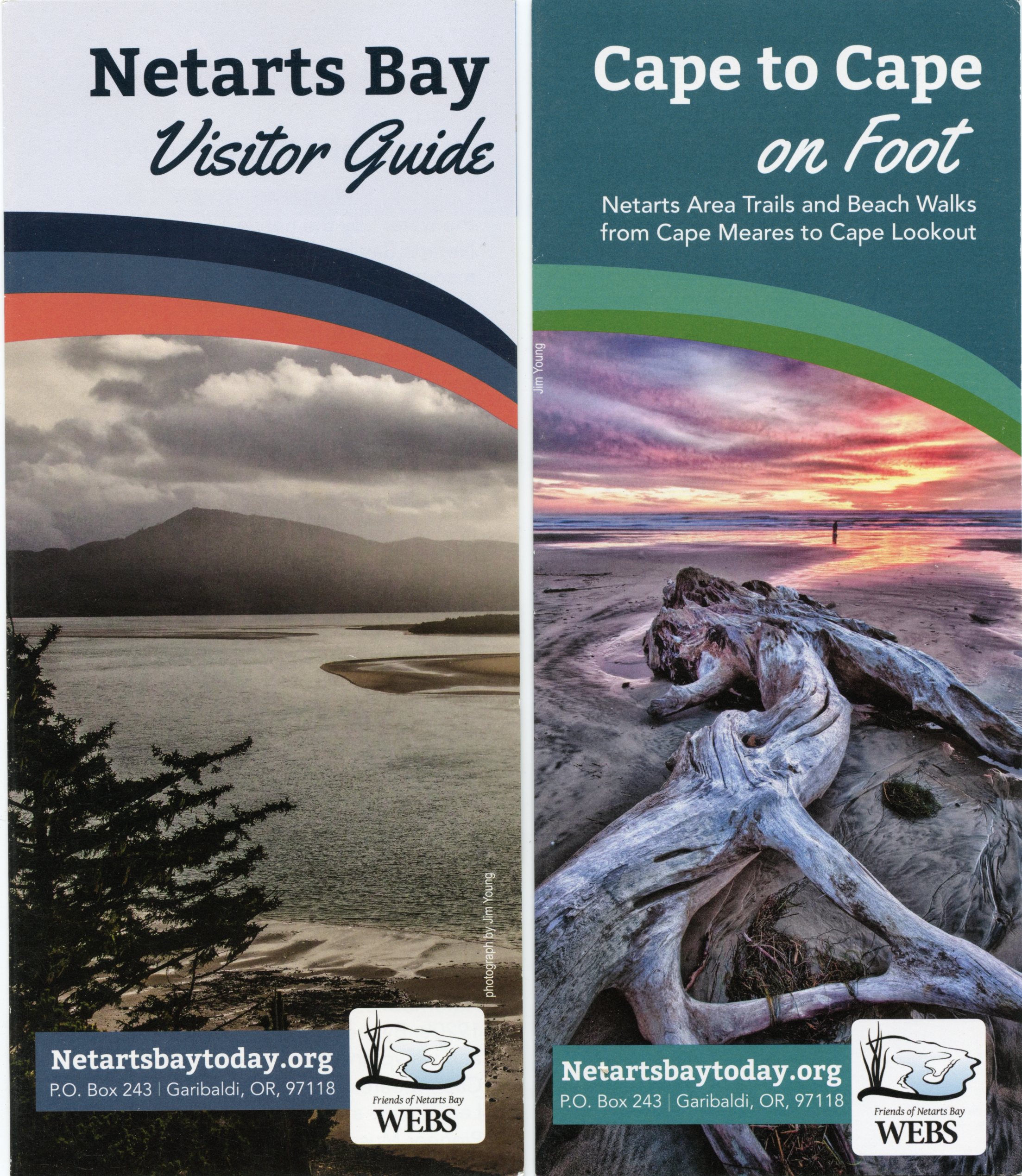Springtime is a favorite season along the Oregon Coast in Tillamook County. You know when it is spring because you can feel it in the earth, see it in the new fresh greenness almost anywhere, and hear the return of songbirds. It is a great place to be.
It is a good time to slow down and take a few moments to experience the world beneath your feet. You can smell the richness of micro-flora and fauna coming to life as days lengthen and soil temperatures warm. Young herbal sprouts grow in soft black earth, high in organic matter and nutrients, at an amazing rate with each passing day. Lucky for us, our soils are off the charts in so many ways.
The parent material for many of the forest soils found between Cape Mears and Cape Lookout is dominated by volcanic ash, andisols* as they are called in the world of soil taxonomy. Volcanic ash has a low bulk density (less than 1), which gives it a light fluffy texture when it is wet or dry. The unique clays found in volcanic ash increase nutrient and water holding capacity. Nutrients would easily leach through the soils if it were not for the ability of each tiny particle to hold onto valuable soil nutrients. One of the unique features of volcanic ash is that it can attract water and nutrients to the outside of the particle as well as the inside, because it is hollow. This is an important feature in our high rainfall climate because it allows the soil to absorb water reducing downstream flood hazards. The nutrient capacity of our soils, mild climate and rainfall all contribute to the most productive areas in the world for growing native trees such as Douglas fir or Sitka spruce.
P1-soils
Have you ever wondered what gives soil that fresh earthy smell? It is a fungus, the same fungus that provides us with truffles and other delicious mushrooms. It is called mycorrhizae fungus and our soils are full of them. A single mushroom with all of its many spreading fungal filaments can be an acre of two in size making it one of the largest organisms on the planet. Mycorrhizae fungus attaches itself to roots and acts like an extension of the root system. It can increase the ability of the plant to take in water and nutrients by ten to one thousand times. In one cup of healthy forest soil there can be over 200 miles of these tiny threadlike fungal filaments. There may be as many as 150 different kinds of mycorrhizae on the roots of a single Douglas-fir tree. Almost all of the trees planted now are inoculated with mycorrhizae fungus. Like the volcanic ash parent material they contribute to our forest productivity by increasing nutrient uptake and reducing disease and drought. Grassland soils tend to have less fungus and more bacteria, something to keep in mind if you want to start a tree farm in a pasture or replant those weedy patches.
And there is so much more to coastal soils, like the living biological component in the soil food web. Oregon State University entomologist Andy Moldenke says that in undisturbed forest soils there are 200 to 250 species of invertebrates in a square meter of soil. Bugs known as arthropods make their home in the soil. Arthropods do not have a backbone. Instead they have an exosleleton and include critters such as mites, spiders, crustaceans, sow bugs, insects like springtails, beetles and ants, centipedes, millipedes and scorpions. They have many vital functions in the soil such as:
• Breaking down organic material - P2-soils
• Increasing mineralization and nutrient availability to plants (nutrient cycling)
• Increasing organic matter and hummus to the soil
• Enhancing soil structure and increasing pore space
• Control pests and reducing disease and harmful predators.
Coastal soils can be diverse in structure, color and texture. They containlayers of diversity and hold the story of the land and its use in their horizons. Road cuts can sometimes be the best place to see a soil profile. The sandy soils found in the Netarts and Oceanside communities are considerably different from forest soils. The sandy parent material produces a colorful soil of red, white, black, and brown horizons. The only place you will find these soils, called Spodosols**, in Oregon is along the Oregon Coast, most commonly in the shore pine/evergreen huckleberry forest community.
On your next outing of the Oregon coast take a moments to explore the soils beneath your feet. Spring, summer, fall or winter they are anything but boring.
Text and photographs by Chris McDonald
Soil Scientist
Tillamook, Oregon
* Soils formed in volcanic ash and defined as soils containing high proportions of glass and amorphous colloidal materials.
** Acidic forest soil of low fertility. These soils form in sandy materials, under climates where large amounts of water infiltrate into the soil at one or more times of the year.



